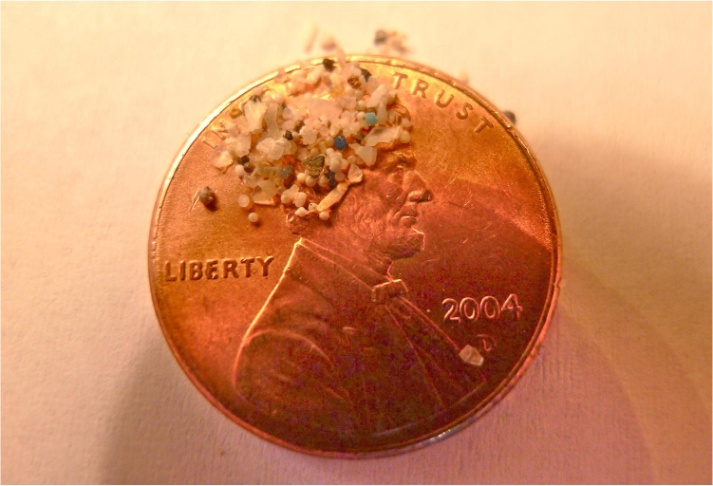Today is World Water Day, a day to recognize that water is our most precious resource, needed by every single living thing on earth. In the Great Lakes, over 40 million people depend directly on HOMES (Lakes Huron, Ontario, Michigan, Erie, and Superior) for drinking water. These lakes are the largest freshwater system on Earth and contain a fifth of the world’s water, adding up to more than 6 quadrillion gallons. Unfortunately, marine debris not only exists in our ocean, but can also be found in the Great Lakes and affect the quality of the water that we are drinking. Tiny plastics less than 5mm in size, called microplastics, dominate the waters of the Great Lakes. We don’t yet know how microplastics in our drinking water can affect human health, but we do know that preventing marine debris is a crucial step in improving the water quality of the Great Lakes.
The Great Lakes are teeming with microplastics. Many microplastic pieces were once part of a larger plastic item that broke apart over time. Sunlight, wind, and wave action can all affect how quickly plastic breaks apart. The Great Lakes are much smaller than the ocean and have more wave action. These unique conditions mean that plastic breaks into smaller pieces more quickly than in the ocean. There are also large population centers around the lakes contributing large amounts of marine debris into the system. These two factors combined means that Lake Erie has some of the highest concentrations of microplastics found anywhere in the world, and the other Great Lakes aren’t far behind.

As people drink water from the Great Lakes, they may also be drinking plastic. One study found that the majority of samples of tap water sourced from the Great Lakes had microplastics in them. Microplastics have even been found in beer made with tap water sourced from the lakes.
The problem can seem overwhelming, but the Marine Debris Program (MDP) is working hard to learn more about microplastics in the Great Lakes, taking steps to prevent debris in the region, and improving the quality of the water. The MDP is currently working with the NOAA National Centers for Coastal and Ocean Science (NCCOS) Great Lakes Mussel Watch Program and Loyola University Chicago to use mussels to monitor for microplastics in the Great Lakes. Mussels stay in one place and filter the water, so they make perfect living sampling devices. At the same time, MDP partners around the Great Lakes region are working together on actions to reduce the amount of marine debris in their region through the Great Lakes Land-based Marine Debris Action Plan.
You can join the Marine Debris Program in our efforts to create clean water for all by doing your part to reduce single-use waste. If we produce less waste, there will be less material that can potentially end up in the Great Lakes or our drinking water. When you quench your thirst today on World Water Day, and everyday, make sure you use a reusable bottle instead of a disposable one. We can all be part of the solution!

I am looking to reach out to someone that can assist me in analytical procedures for determining if microfibers and other materials are natural fibers or plastic fibers in water and lint traps. Can someone assist? Thank you